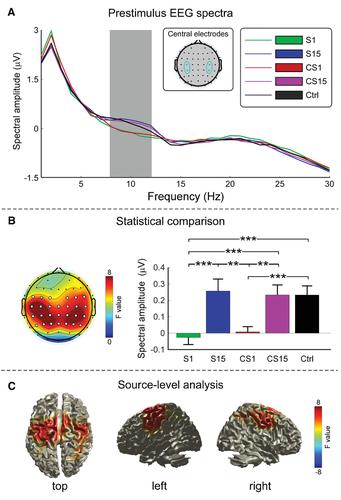当前位置:
X-MOL 学术
›
Ann. N. Y. Acad. Sci.
›
论文详情
Our official English website, www.x-mol.net, welcomes your
feedback! (Note: you will need to create a separate account there.)
Movement-induced hypoalgesia: behavioral characteristics and neural mechanisms
Annals of the New York Academy of Sciences ( IF 4.1 ) Pub Date : 2021-03-10 , DOI: 10.1111/nyas.14587 Xuejing Lu 1, 2 , Xinru Yao 1, 2 , William Forde Thompson 3 , Li Hu 1, 2
Annals of the New York Academy of Sciences ( IF 4.1 ) Pub Date : 2021-03-10 , DOI: 10.1111/nyas.14587 Xuejing Lu 1, 2 , Xinru Yao 1, 2 , William Forde Thompson 3 , Li Hu 1, 2
Affiliation

|
Pain is essential for our survival because it helps to protect us from severe injuries. Nociceptive signals may be exacerbated by continued physical activities but can also be interrupted or overridden by physical movements, a process called movement-induced hypoalgesia. Several neural mechanisms have been proposed to account for this effect, including the reafference principle, non-nociceptive interference, and top-down descending modulation. Given that the hypoalgesic effects of these mechanisms temporally overlap during movement execution, it is unclear whether movement-induced hypoalgesia results from a single neural mechanism or from the joint action of multiple neural mechanisms. To address this question, we conducted five experiments on 129 healthy humans by assessing the hypoalgesic effect after movement execution. Combining psychophysics and electroencephalographic recordings, we quantified the relationship between the strength of voluntary movement and the hypoalgesic effect, as well as the temporal and spatial characteristics of the hypoalgesic effect. Our findings demonstrated that movement-induced hypoalgesia results from the joint action of multiple neural mechanisms. This investigation is the first to disentangle the distinct contributions of different neural mechanisms to the hypoalgesic effect of voluntary movement, which extends our understanding of sensory attenuation arising from voluntary movement and may prove instrumental in developing new strategies for pain management.
中文翻译:

运动诱发的痛觉减退:行为特征和神经机制
疼痛对我们的生存至关重要,因为它有助于保护我们免受严重伤害。持续的身体活动可能会加剧伤害性信号,但也可能被身体运动中断或覆盖,这一过程称为运动诱发的痛觉减退. 已经提出了几种神经机制来解释这种影响,包括再参照原理、非伤害性干扰和自上而下的下降调制。鉴于这些机制的痛觉减退作用在运动执行过程中暂时重叠,尚不清楚运动引起的痛觉减退是由单一神经机制还是多种神经机制的联合作用引起的。为了解决这个问题,我们通过评估运动执行后的镇痛效果,对 129 名健康人进行了五次实验。结合心理物理学和脑电图记录,我们量化了随意运动强度与痛觉减退效应之间的关系,以及痛觉减退效应的时空特征。我们的研究结果表明,运动引起的痛觉减退是多种神经机制共同作用的结果。这项研究首次阐明了不同神经机制对随意运动的痛觉减退效应的不同贡献,这扩展了我们对随意运动引起的感觉减弱的理解,并可能有助于开发新的疼痛管理策略。
更新日期:2021-03-10
中文翻译:

运动诱发的痛觉减退:行为特征和神经机制
疼痛对我们的生存至关重要,因为它有助于保护我们免受严重伤害。持续的身体活动可能会加剧伤害性信号,但也可能被身体运动中断或覆盖,这一过程称为运动诱发的痛觉减退. 已经提出了几种神经机制来解释这种影响,包括再参照原理、非伤害性干扰和自上而下的下降调制。鉴于这些机制的痛觉减退作用在运动执行过程中暂时重叠,尚不清楚运动引起的痛觉减退是由单一神经机制还是多种神经机制的联合作用引起的。为了解决这个问题,我们通过评估运动执行后的镇痛效果,对 129 名健康人进行了五次实验。结合心理物理学和脑电图记录,我们量化了随意运动强度与痛觉减退效应之间的关系,以及痛觉减退效应的时空特征。我们的研究结果表明,运动引起的痛觉减退是多种神经机制共同作用的结果。这项研究首次阐明了不同神经机制对随意运动的痛觉减退效应的不同贡献,这扩展了我们对随意运动引起的感觉减弱的理解,并可能有助于开发新的疼痛管理策略。









































 京公网安备 11010802027423号
京公网安备 11010802027423号